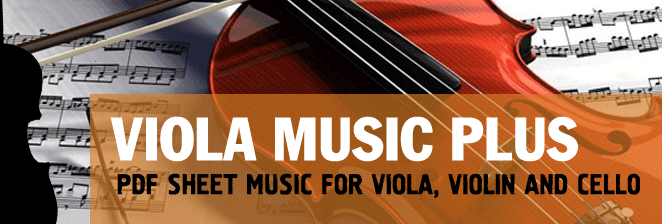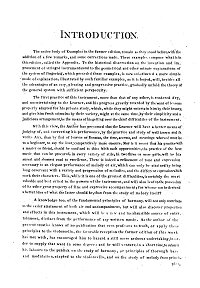|
|
 |
|
| |
| |
|
Gunn - Theory and practice of fingering the violoncello |
Gunn - Theory and practice of fingering the violoncello
Gunn - Theory and practice of fingering the violoncello. You can download the PDF book Gunn - Theory and practice of fingering the violoncello on this page. The entire body of Examples in the former edition, remain as they stood before, with the addition of a few remarks, and some corrections made. These examples compose what is in this edition, called the Appendix. To the historical dissertation on the invention and improvement of stringed instruments and to the geometrical and other minute explanations of the system of fingering, which preceded these examples, is now substituted a more simple mode of explanation, illustrated by such familiar examples, as it is hoped, will, besides all the advantages of an easy, pleasing and progressive practice, gradually unfold the theory of the general system with sufficient perspicuity.
The first practice of this instrument, more than that of any other, is rendered dry, and unentertaining to the Learner, and-his progress greatly retarded by the want of lessons properly adapted for his private study, which, while they might entertain him by their beauty, and give him fresh stimulus by their variety, might at the same time, by their simplicity and a judicious arrangement, be the means of his getting over the chief difficulties of the instrument.
To download PDF, click the "Download PDF" button below the appropriate sheet music image.
To view the first page of Gunn - Theory and practice of fingering the violoncello click the music sheet image. |
PDF format
|
|
|
|
Book: 64 pages. 3543 K
|
|
 |
|
|
|
| Download PDF (14.99
€) |
|
|
With this view, the Author has presumed that the Learner will have a better means of judging of, and correcting his performance, by the practice and study of well known and favorite Airs, than by that of lessons or Sonatas, the time, accents, and meanings whereof must be to a beginner, to say the least, comparatively more obscure. Nor is it meant that his practice with a master or friend, should be confined to this; With such opportunities, the practice of the best music that can be procured, in every variety of stile, in two three or more parts, will be his surest and shortest road to excellence. There is indeed a refinement of tone and expression necessary to an elegant performance of melody or air, which can only be attained by being long conversant with a variety and progression of melodies, and the different expression which mark their characters. This, while it is one of the greatest difficulties, is certainly the most valuable and best suited to. the powers of the instrument, and will also lead to the possession of its other great property of fine and expressive accompaniment; for whence can be derived a better idea of what the latter should be, than from the study of melody itself?
A knowledge too, of the fundamental principles of harmony, Will not only contribute to the easier attainment of both air and accompaniment, but will also discover properties and effects in this instrument, which will be a new and inexhaustible source of entertainment, distinct from the performance of any written music. As the author of the presents treatise knows of no publication that even professes to teach, or apply these principles to the violoncello, the favorable reception the former edition of this work has met with, has encouraged him to hazard a still more arduous undertaking, in order to supply that want in some degree: and he will venture, in a short time/to submit his labors to the public on the study of harmony, or principles of thorough bass and modulation, adapted to the violoncello, and on the study of melody from principles, and the practice of the best vocal and instrumental airs progressively arranged.
In the course of this intended work, the Author will have occasion to refer to the best publications in illustration of the principles, but more particularly to a selection of Duets by the best masters, for the violin and violoncello, which will appear at the same time, comprehending a gradation of practice, from the easiest, to what may be considered as sufficiently difficult, and illustrative of the fingerboard, and of the fundamental passages, the principles whereof will be found in the former work. In this selection the fingering and bowing will be particularly attended to, and refer to the rules in the present treatise; and notices will be occasionally given of the authors whose compositions these duets will enable the Learner to perform, as he proceeds in their practice. The rules given in this treatise for the management of the bow from §60 to §65, originated in the author's observations on the different modes of bowing, practiced by the most eminent performers, not only on the violoncello, but on the violin, and in his own experience, during a period of twenty years unremitting practice, in teaching this involved part of the art; and he hopes that his description of the positions and movements of the joints will, by the help of the drawings referred to, be intelligible to the Learner. The best authorities have been also consulted, but he apprehends these movements and positions have either been imperfectly explained, or have altogether escaped observation. |
|
|
|
|
| |
|
|
| |
|
|
|
|